This month in PopCulture25YL, we’re taking a look at the music, shows, video games, and whatever else we want from the month that was July of 1994.
VHS in the VCR
The Dinosaurs finale literally ends in extinction by John Bernardy
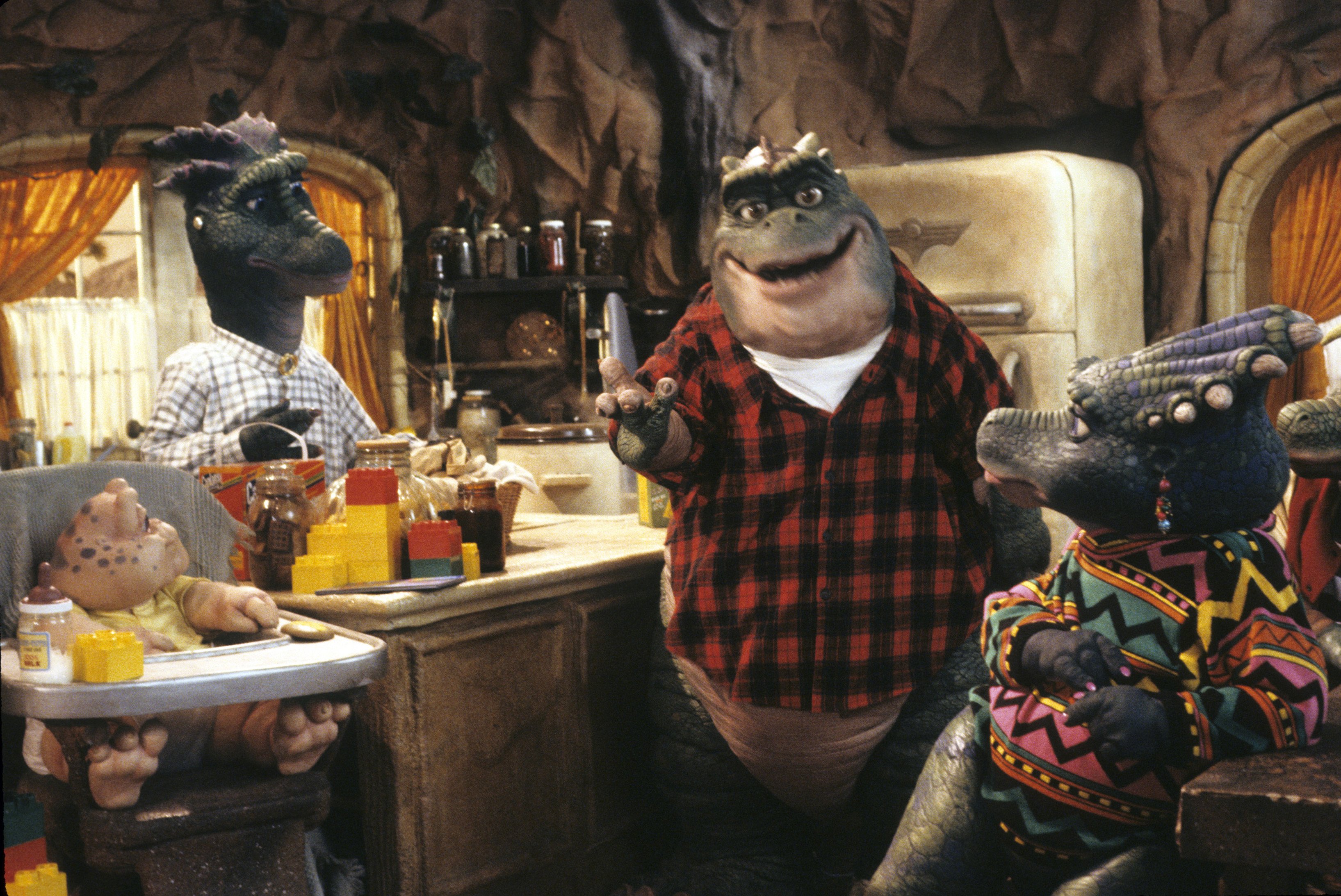
Usually, if you think of the TGIF lineup on ABC in the ‘90s, you’ll either think Full House or Family Matters. And if you think of the live-action puppet show called Dinosaurs, you might think of how it aped the Flintstones, or how the baby dino always said, “not the mama!”
Which is why it’s not shocking at all that ABC buried “Changing Nature”—the show’s uncharacteristic downer of a series finale—deep in July when no one was expecting anyone to air new episodes on television. This thing is dark. We’re basically shown the beginning of the genocide of the entire cast.
The message is worn on its sleeve: It’s supposed to work as an environmental message to us to stop corporate greed before the irresponsible corporation’s cash in our own future for quick profit now.
WESAYSO, the company the Sinclair family father Earl works for, built one of their factories over the breeding grounds of Bunch Beetles, and that leads to their extinction. And because the Bunch Beetles are now extinct, the vines they eat are now out of control everywhere. WESAYSO tries to avoid bad PR over the extinction by getting rid of the vines, but the defoliant they use destroys the planet’s plant life. And WESAYSO thinks making clouds to promote plant growth is the answer so they bomb a lot of volcanoes to erupt and create clouds. And there we have the conditions that killed the dinosaurs. Is WESAYSO going to try something else to fix it? Nope! They’re raking in profit from selling heaters and such. It’s good for business!
This is all done in 17 show minutes, mind you. It’s incredibly oversimplified but it works okay. It’s supposed to be uncomfortable, which it is, thanks to how the show conventions are progressing just like they always do, though it’s more surreal than impactful.
Just like every episode with the delivery of the cheesy dinner table scene at the end, Earl explains to his family the lessons he’s learned from his hijinks. Except this time they’re all shivering in their new Now. “Daddy was put in charge of the world and he didn’t take really good care of it.” Baby asks “Are we going to move?” And unlike every other episode, there’s no hokey gag at the end where everybody does the canned laughter. They come together as a family, say they’re still together for each other, and they have confidence that dinosaurs had been on the earth for a hundred and fifty million years for a reason. They’ll surely figure something out.
It makes me sad that all the satire still holds true today, and I’m really proud of the Dinosaurs team in going big with its final episode. After all, what other kind of show has a built-in finale like this taught in schools? It’s practically a gag all by itself. And really, why not lean into it if you can move the needle towards proper activism? Good for you, Dinosaurs. You may not have made as big a dent as a meteor, but thanks to the internet for keeping this finale alive it may help move the needle, however incremental.
At the Comic Shop
Invisibles #1 By Steve Wandling
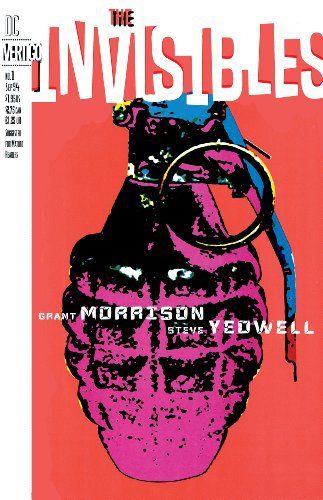
DC Vertigo is the reason why I got into comics. I’ve always looked for slightly more off-kilter fare than the traditional superhero trades. Now, don’t get me wrong. I have spent more money than I’ll ever make on Batman and X-Men comics. Vertigo was different, though. I was a horror kid from as far back as I can remember. More than that, I was always looking for something that seemed a little darker and more adult, regardless of drama. Nothing could have possibly prepared my nine-year-old brain—or my parents for that matter—for Grant Morrison (Doom Patrol)‘s The Invisibles. It’s hard to believe that it’s been 25 years since the first issue, but it still stands out as one of the most important and groundbreaking comic books ever published by DC Vertigo or anyone else.
The Invisibles was controversial in 1994 and it’s still pretty controversial today. These really aren’t your grandfather’s superheroes. Even for Grant Morrison. The Invisibles was a different kind of book and also the first that was owned by the creator himself. The book follows the members of the Invisible College and it is perhaps even more relevant now than it was a quarter-century ago. The stories were extremely violent and would be censored more than once for daring to tackle such subjects as childhood sexual assault and…making fun of Walt Disney? One would think the two ideas would never be spoken aloud together, but Grant Morrison’s book was so heavy in parts that even on the more adult imprint DC Vertigo, he was constantly battling censorship.
The Invisibles was groundbreaking in its LGBTQ+ representation. One of the main characters was a trans Brazilian named King Fanny who was a sort of mystic or shaman. Grant Morrison was creating characters for trans kids to be able to see themselves in the pages of when many people were still arguing whether or not homosexuality itself could be cured. Things are getting better in terms of representation in comics, but there’s still a helluva long way to go to reach any semblance of equality. Back In 1994? You can forget about it. The world still largely viewed being gay as an alternative lifestyle best kept in the closet. Transgender pretty much meant you were mentally ill. We were still nearly two decades away from having equal marriage. King Fanny was a great big fuck you to the repressive bigoted establishment that is sadly still in power today.
The other members of The Invisibles were also fighting against every type of oppression that came their way by any means necessary; physically, mentally, and psychically fighting the good fight. The Invisibles, though meant for older readers, really showed a lot of political and sociological issues to readers that may not have otherwise been exposed. That’s part of the reason I personally love comics. Escapism is without a doubt a worthy endeavor, but don’t believe anyone who says their art isn’t political. Everything is political. King Mob, the de facto leader of The Invisibles, was an actual revolutionary in the truest sense of the word (and a damn fine assassin). He, King Fanny (who was also an ex-NYPD officer), telepathic Ragged Robin (still one of my favorite comic monikers), and newbie Jack Frost (an ex street thug from London who might be…the Buddha?) were a team that, much like Morrison’s iteration of Doom Patrol, was never seen before.
The first issue sets the controversial and intense tone right from the start. We come into the tale through Jack Frost’s name, who is still just Dane McGowan at this point. He’s a British street kid from a broken home. His parents actually may get my vote for worst parents of ‘94, though Darla from The Crow is right up there. Dane is lashing out at the world and tries to set his school on fire in the very first issue of The Invisibles. Talk about letting the world know exactly what type of comic you were writing from the word go. Luckily, Dane is saved by King Mob and the rest of The Invisibles who name him Jack Frost.
The team went on to fight for freedom and the right for people to exist for the next six years. The rest, as they say, is history. DC Vertigo is dead. Long live DC Vertigo!
CDs On Rotation In Our 6-Disk
311 – Grassroots By Bryan O’Donnell
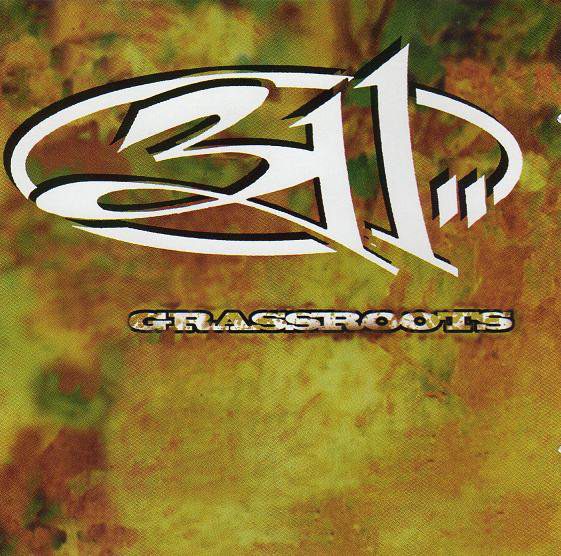
Omaha, Nebraska-based 311 released Grassroots on July 12, 1994. Most of the albums I have reminisced about for PopCulture25YL were very important to me while growing up in 1994. Grassroots is a bit different, however. I didn’t discover 311 until they crossed more into the mainstream with their self-titled “Blue” album, which was released almost exactly a year after Grassroots.
After really digging into the Blue album and then being blown away by them in concert during their Transistor tour, 311 became a bit of an obsession for me in high school. It was one of my first “favorite” bands in which I listened to everything they put out and traveled to other states to see them live. Grassroots eventually became my favorite 311 album, and I’d say it still is today. But I didn’t hear about it until years after its release.
The album has a number of the band’s best songs: the opener “Homebrew” kicks things off right and leads into my favorite 311 song, “Lucky.” Another classic, “Omaha Stylee” (“got more funky styles than my Laserjet got fonts”!) lands in the middle of the album before giving way to “Applied Science,” which if you’ve ever seen them live is the song they morph into a full-band drum solo. The album also features the song titled “Grassroots,” definitely an underrated 311 tune, as well as some of the band’s best trippy, more laid-back songs: “Taiyed,” “Lose,” and “1,2,3.” 311 has one of the most unique sounds as a band, mixing rock, rap, reggae, and funk.
Singers Nick Hexum and S.A. Martinez provide a great balance, playing off each other and working together. The musical relationship between the two really shines on Grassroots. The album is so different from many of the epic alternative rock albums released in 1994. I actually was surprised to learn it came out that year. But I would have to put it in contention for my top album of 1994, for sure.
The Prodigy – Music For The Jilted Generation by John Bernardy
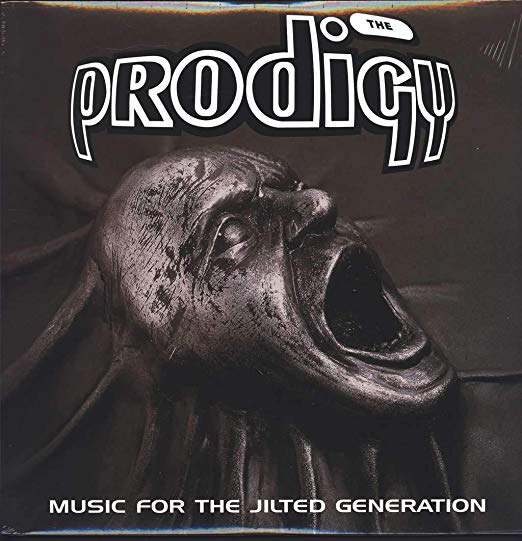
I am a huge fan of The Prodigy’s Fat of the Land, which came out a few years after this one, so I was excited to finally go back and listen to Music For The Jilted Generation.
“Intro” began with a zither and typewriter keys. A voice spoke about taking his work underground “to stop it from falling into the wrong hands.” It’s intriguing. A little over the top, but interesting all the same. I liked the idea there’d be a framing device, like on DJ Shadow’s Endtroducing, but the album never goes back to that framing device at all. I was counting on a bookend that never happened.
All we got from them was a giant DJ set, and it was way less thrashing than I was expecting. The album uses industrial sounds and break beats but it’s more head nodding and light sticks than Tear This Shit Up.
Listening to this album for the first time, I realized I’d heard “Full Throttle,” “No Good (Start the Dance)” and “Voodoo People” before but had no idea they weren’t oversimplified remixes of more realized songs. I also heard “Poison” but I knew that was an album version. I still have no idea if I like that song, but I sure know these guys have the poison and the remedy.
The album’s good but it’s a rough draft compared to Fat of the Land, though I’m willing to admit that I’m biased since that was the first album I knew from these folks. I can see why Jilted got people’s attention because it put elements of electronica together with more industrial sounds, but it was a DJ set rather than a collection of realized songs.
Would I have fallen in love with the album had I listened to this in 1994? Probably not (except for the Beasties-funky “3 Kilos). I was barely good for liking Orbital at this point and that group is based more in the video game sounds that made complete sense to me. The Prodigy at this point was good at what they did but I wanted something more cohesive. I’m looking at Jilted like it was a fantastic learning experience for the band. I heard all the building blocks they would use on Fat here, assembled differently and rarely layered. But you can tell this was the beginning of their next evolution, and that counts.
Hootie & The Blowfish – Cracked Rear View by John Bernardy
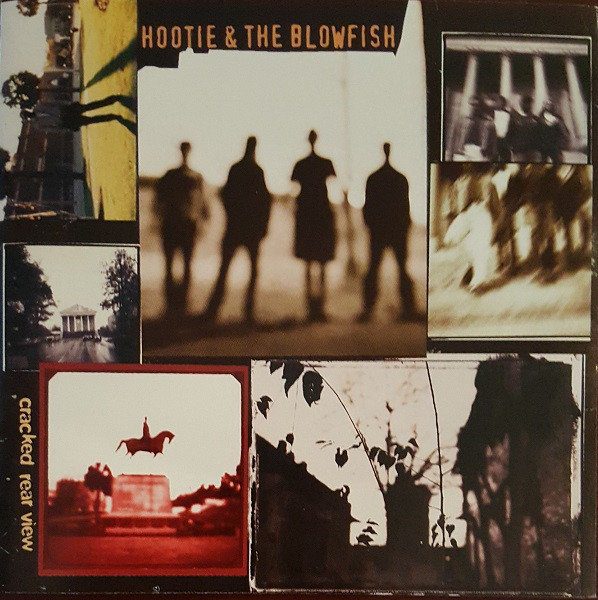
You had this album. If you were even close to my age group, you secretly wanted to buy The Rembrandts album for the Friends theme “I’ll Be There For You” and Cracked Rear View was a CD in your house. And you liked it. It’s okay to admit.
We all liked it, right up until we didn’t. This album has to be part of a Mandela Effect or something.
It’s such an odd experience, both how this album wasn’t from a later year, and also how it just dropped out of our memories. I thought for sure this album came out around the same time as Matchbox 20 and Bush, but here it was right in the middle of the best summer of music since the ‘60s. And we all enjoyed this thing. It collectively disappeared from the collective consciousness somewhere around 1999 but this album was an unavoidable juggernaut of polite anthems. And don’t tell anyone but I still like “Hold My Hand” almost as much as I despise “Only Wanna Be With You.”
For a name like Cracked Rear View, it’s not very cracked. It’s sort of heartfelt but Darius Ruckers has one southern rock kind/country kind of quality to his voice. His unwavering level of earnest makes the whole thing lose its meaning after a certain point. He sings Motherless Child at the end without the band, and it makes me think it’s gospel style, but again he’s got one level of dynamics so it’s all same feeling. Even the track “Drowning” comes off pleasant.
I’m still struggling whether this album deserves what happened to it, both during its heights or its current absence. Probably what I’ll do is next week I’ll forget again that this album exists and I’ll be perfectly happy.
Marilyn Manson – Portrait of an American Family By Laura Stewart
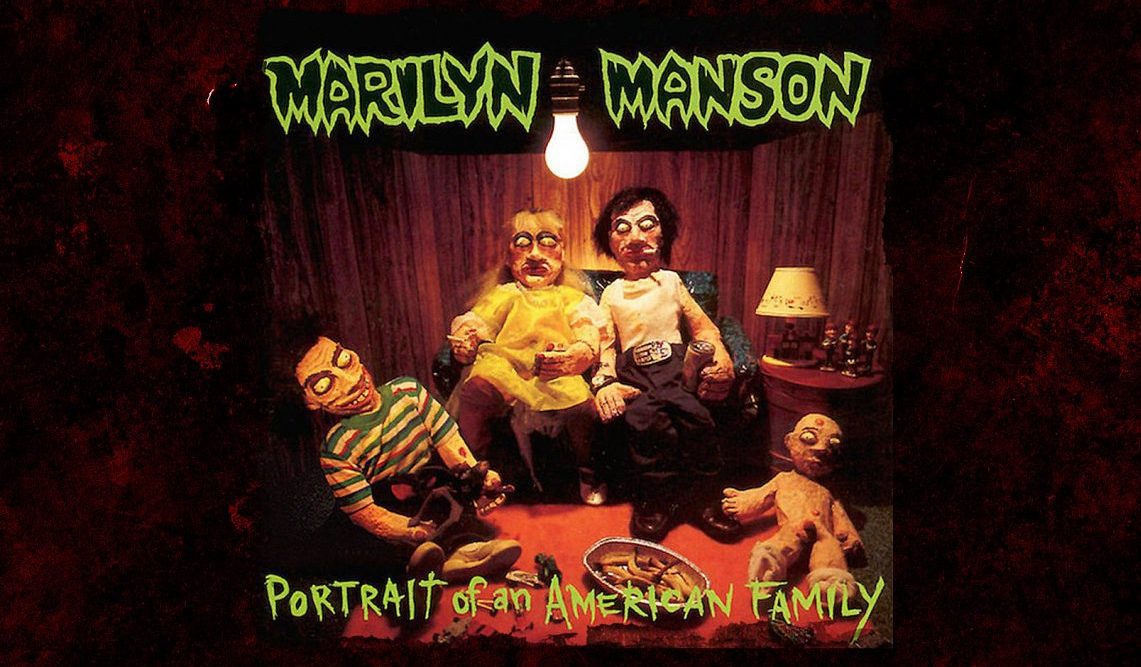
Ah Marilyn Manson. Bring’s back some memories. I remember the exact moment I heard Portrait of an American Family. I was a huge fan of Nine Inch Nails (still am) and knew that this band had signed to Nothing Records. I’d seen the video for “Lunchbox” on MTV and was intrigued. Technicolor Goths. That was new. Honestly, I didn’t think much of the track—it was certainly more visually than musically appealing to me, but that would change. I saw a photo in a music mag of Marilyn Manson, Twiggy Ramirez, and Courtney Love together. Manson was wearing a Twin Peaks t-shirt. They were winning me over. That weekend I bought the album, and the first thing I noticed was a track called, “Wrapped in Plastic”. I played that one first when I got home, and as I heard the instantly recognisable reverse speak of The Little Man from Another Place, then Laura Palmer’s blood-curdling doppelganger scream, I knew this was it. THIS was the band I’d been looking for to fill the Nirvana shaped hole in my life. Hallelujah!
After Kurt’s death, rock music was decidedly on the cusp of becoming very middle of the road again. Thank the Antichrist for Marilyn Manson. “Portrait” was originally intended to be named, “The Manson Family Album” but Interscope Records found it to be in too poor taste. As it was, the album was partially recorded at the house owned by Trent Reznor which happened to be at 10050 Cielo Drive: the address where members of the Manson Family committed the Sharon Tate murders. It was all perfectly unsettling. Pair this with Manson’s (Brian Warner) provocative nature and the label had trouble on their hands—trouble that would make them millions of dollars. Manson was there to kick the doors wide open on the nuclear White American Family and show them for exactly what they were.
‘Wrapped in Plastic’ couldn’t be a more perfect song to represent this. Manson has said that one aspect of the song’s title was the superficial ideal nature of suburban households who wrap their couches in protective plastic covers to keep their expensive sofa cushions pristine—literally to keep out the dirt, which can be seen as a metaphor for their isolationist attitudes toward the repugnancy of those who are not part of their so-called “status quo”. The irony though, as Manson has pointed out, is that the practice dually acts as the metaphorical aspect of keeping the dirt inside; the lie of the false veneer atop the sordid secrets kept desperately from prying eyes.
Twin Peaks illustrated this verbatim. The series opened with the line, “She’s dead. Wrapped in plastic,” spoken by Pete Martell (Jack Nance) over the line of a 911 call reporting the discovery of a dead body wrapped in thick transparent plastic. It was high school prom queen, Laura Palmer, the pride and joy of the town Twin Peaks. As layers of complexity unfold we learn she is not the all-American teen dream she’s perceived as but that she’s addicted to cocaine, was actively working as a prostitute at an over-the-border casino/brothel in Canada and has a polar opposite secret life. And, it would turn out that her father Leland, an Attorney at Law, was his daughters killer. On the surface this family was perfect; living in a beautiful big white house in middle-class suburbia, but behind closed doors and underneath the fan, evil was having his way night after night.
But what about the rest of this Portrait of an American Family? Well, it’s not aged too gracefully over the last 25 years in all honesty. It is mostly classic rock which doesn’t really age, but the beats and samples do sound pretty dated now.
The album has a wide array of very dark American cultural references. The words “Go on and smile, you c**t” at the beginning of “Cake and Sodomy” are spoken by Marlon Brando in the film Last Tango in Paris. “Dogma” samples Mink Stole’s character shouting, “Burn, you fucker!” from John Waters’ Pink Flamingoes. The phrase “We’re gonna ride to the Abbey of Thelema” in the song “Misery Machine” is a reference to Aleister Crowley’s Abbey of Thelema, which was used as the Headquarters from which the doctrines of Thelema would be spread throughout the world. The track “My Monkey” borrows certain lyrics from a Charles Manson song called “Mechanical Man”. In “Get Your Gunn”, there is a sample of a crowd murmuring and a gunshot. This is the audio from the press conference in which Budd Dwyer committed suicide in front of an audience. “Killing is killing, whether done for duty, profit or fun” is a quote by Richard Ramirez that is an audio clip at the start of “Snake Eyes and Sissies”. Such a ‘feelgood’ album.
Portrait brought attention to the band that they were looking for. Controversy and offensiveness were the order of the day, and while it’s not the easiest album to listen to today, (it can seem a bit like a joke album in places) there are some really great tracks—“Dogma” is on any long journey mixtape I make to this day. “Dope Hat”, with its video ode to Willy Wonka & The Chocolate Factory and Chitty Chitty Bang Bang (they really don’t make kids films as terrifying as this anymore) still gets you stomping your feet.
You won’t find much of anything that really made Marilyn Manson the household name he is today, rather you’ll catch glimmers of what makes the band great in the future. Little did I know at the time that Mr. Manson himself would enter my future during the Summer of ’97. But you’ll have to wait until “Antichrist Superstar” turns 25 before I tell. Meanwhile…


